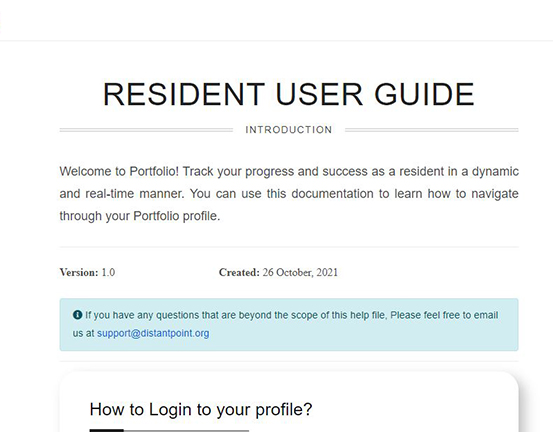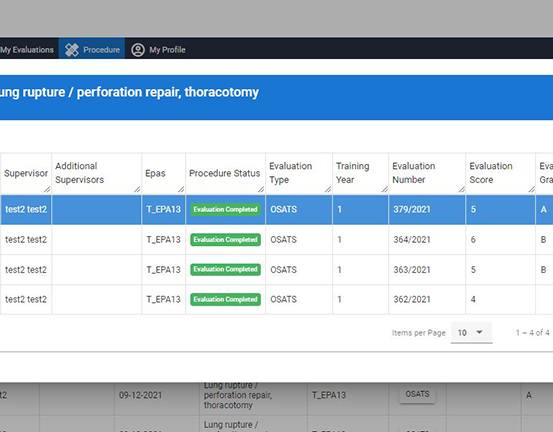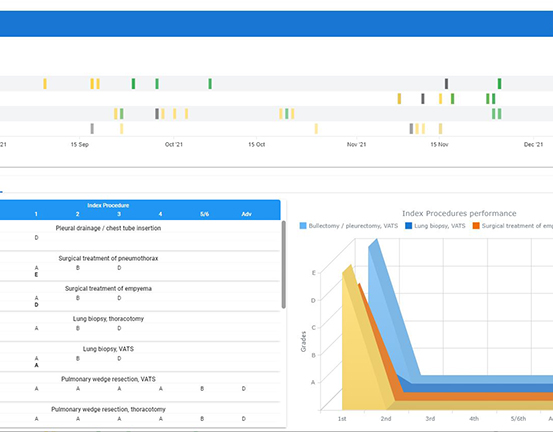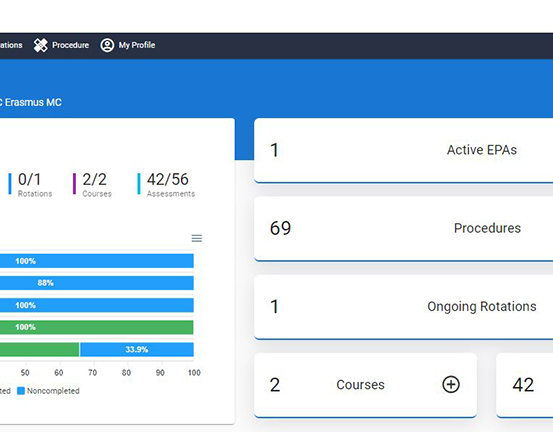The Smart Portfolio System is easily tailorable, manageable and adaptable for any curriculum no matter the speciality of the residency. With a few steps you can insert your data or you can start with using ours

This web-based platform offers the end-user a fully digital assessment experience with all necessary tools to monitor competency completion automatically and remotely engage with their supervisors and residency program directors

The intuitive user interface includes download/upload functions, search functions, FAQ sections, and helpdesk sections

Тhe platform is available in a web-based environment and soon as an application for smartphones and tablets

The intention is in the future to even provide a country adjusted version based on local training programs
Skills training programs are concentrated on animal models or human tissues. Current approaches focus mostly on technical aspects undermining the critical component of soft-skills training.
Training and certification for surgeons varies enormously between countries and marked differences in competency assessment across the world result in several discrepancies in:e

We aim to digitally transform residency programs at the global level
Registration activities, procedures, and procedural parts performed during training
Trainees can keep their training objective and structured
Through the notification system, the supervisor constantly monitors the activities of the resident
Archiving function for various training-related documents
Three standard accounts were provided to the users (trainee-, trainer- and program director accounts)
One administrator account for full background access, technical support and program design
Objective Structured Assessment of Technical Skills: a scoring system to compare and evaluate the technical skills of the trainee during a procedure and or simulation (overtime)
Critically Appraised Topic: An evaluation form focused on the scientific development of the trainee
Short Clinical Feedback: This is a scoring system to score, compare and evaluate the non-technical skills of the trainee during the (skills) training; for instance, communication, leadership, management, performance under stress, cooperation, social awareness, professionalism
This form evaluates the trainee's non-technical skills in communication and cooperation with colleagues and patients
Once in 3 months the trainee and the Head of Training evaluate the training program, the progress of the trainee, the effectiveness of the training program, the role of (individual) trainers, etc.
Annual evaluation: Once per year the trainee and the Head of Training evaluate the training year. This evaluations are confidential. If needed a long-term action plan can be initiated during these evaluations.
Using the aforementioned assessment and evaluation forms, the trainers can determine and objectify the level of competence of their trainees. This scale describes the performance of the trainee and the level of independence:

E.The trainee is supervising this skills procedure
D. The trainee has performed this skills procedure independently
C. The trainee has performed this skills procedure under limited supervision
B. The trainee has performed this skills procedure under strict supervision
A. The trainee has assisted this skills procedure